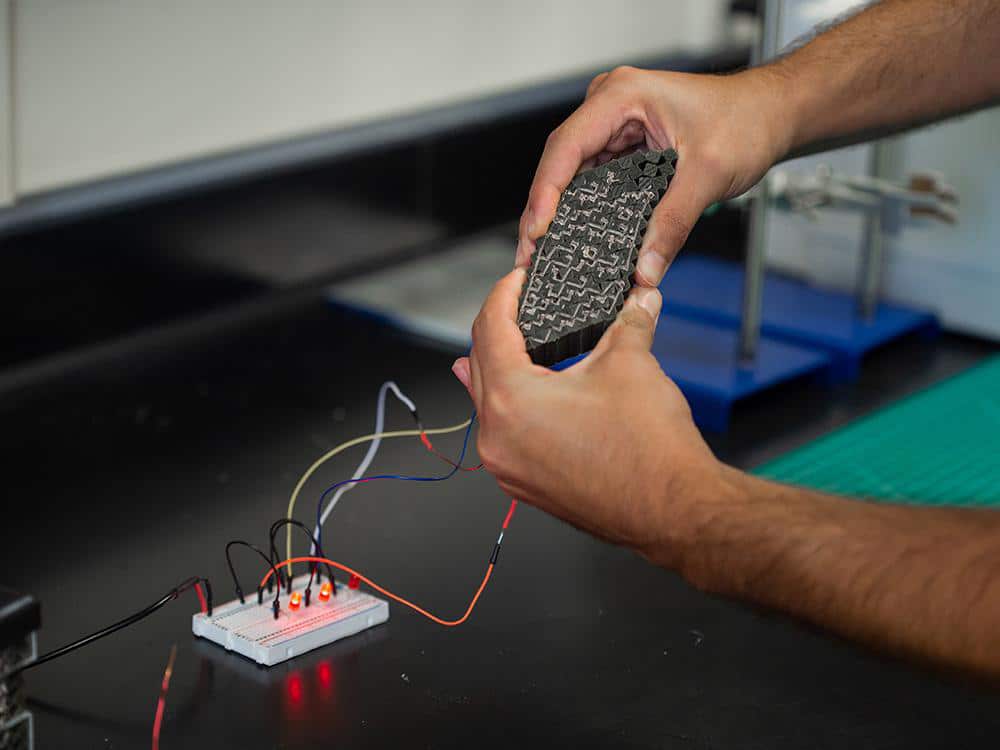Penn State engineers, in collaboration with U.S. Air Force researchers, have created a soft, polymer material that acts like a brain, simultaneously sensing, thinking, and acting upon mechanical stress without requiring additional circuits to process these signals.
It could be a novel, reconfigurable alternative to integrated circuits. Integrated circuits are typically composed of multiple electronic components housed on single semiconductor material, usually silicon, and they run all types of modern electronics, including phones, cars, and robots. Integrated circuits are the core constituent needed for scalable computing of signals and information but have never before been realized by scientists in any composition other than silicon semiconductors.
The new discovery revealed the opportunity for nearly any material around us to act like its own integrated circuit: being able to ‘think’ about what’s happening around it. “We have created the first example of an engineering material that can simultaneously sense, think and act upon mechanical stress without requiring additional circuits to process such signals,” said Ryan Harne, an Associate Professor of Mechanical Engineering at Penn State.
“The soft polymer material acts like a brain that can receive digital strings of information that are then processed, resulting in new sequences of digital information that can control reactions.”

The soft material contains reconfigurable circuits that can realize combinational logic. When the material receives external stimuli, it translates the input into electrical information that is then processed to produce output signals. The material could use mechanical force to compute complex arithmetic or detect radio frequencies to communicate specific light signals.
Researchers say the mechanical integrated circuit material uses a similar ‘thinking’ process as humans and has potential applications in autonomous search and rescue systems, infrastructure repairs, and even in bio-hybrid materials that can identify, isolate and neutralize airborne pathogens.
For polymer materials to process and think about information in a similar way to the brain, they must perform intricate internal calculations. When the researchers subject their engineered material to mechanical information – an applied force that deforms the material – it digitizes the information to signals that its electrical network can advance and assess.
The research team is now evolving the mechanical integrated circuit material to process visual information like it does physical signals.
“We are currently translating this to a means of ‘seeing’ to augment the sense of ‘touching’ we have presently created,” Harne said. “Our goal is to develop a material that demonstrates autonomous navigation through an environment by seeing signs, following them, and maneuvering out of the way of adverse mechanical force, such as something stepping on it.”
Engineers develop novel material that can think and sense
Source: Tambay News

0 Comments